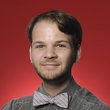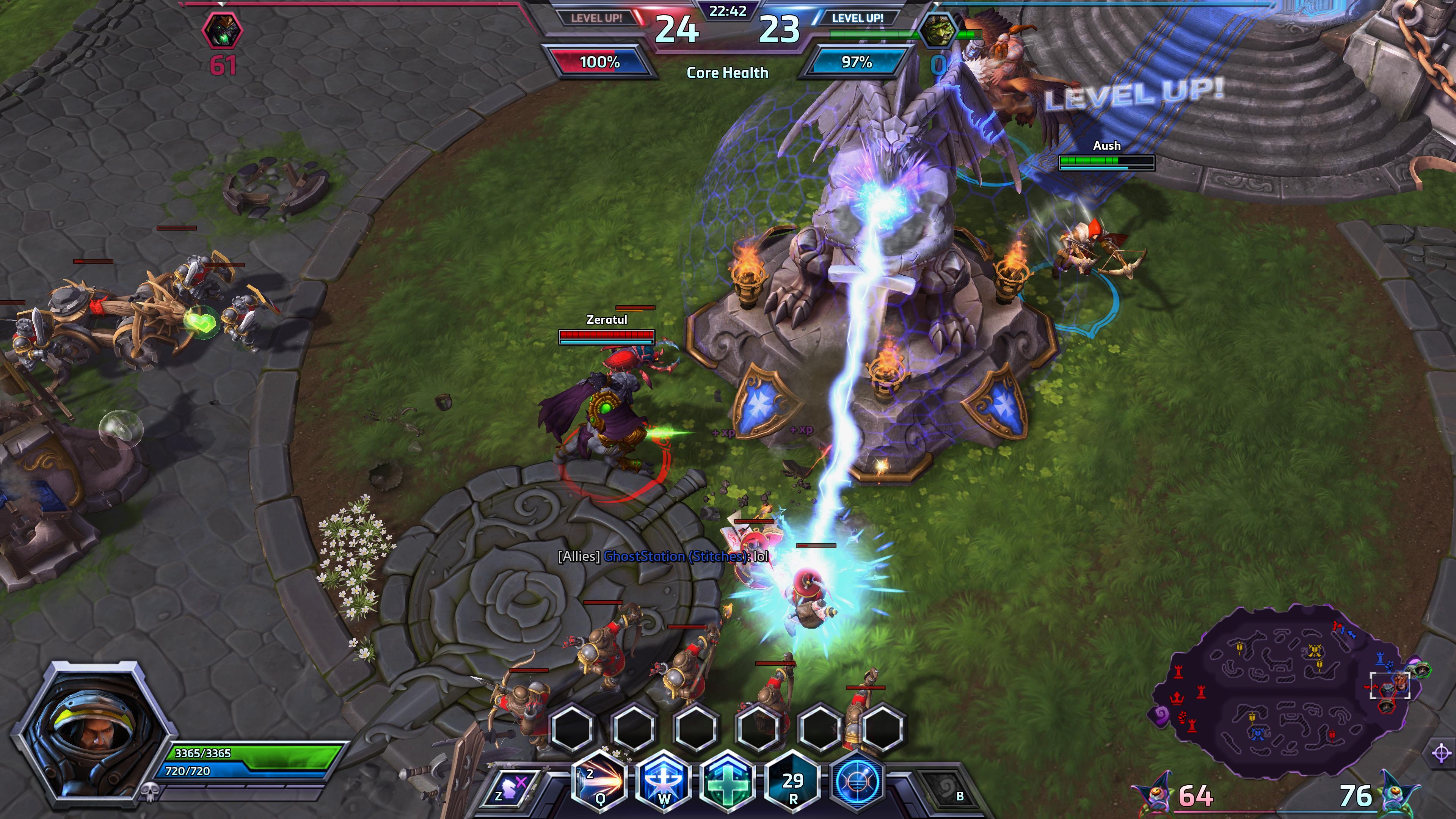
Heroes of the Storm went into open beta earlier this week, and it won’t be long before it launches into a full release. Blizzard is trying its hand at breaking into the free-to-play MOBA world, but it isn’t entirely mimicking the already wildly successful League of Legends and Dota 2. HotS is fundamentally a very similar game, but some key differences make it simpler to learn and play—and simpler doesn’t necessarily mean worse.
If you’ve heard that HotS is just MOBA-lite—an unfair generalization, I think, even if it’s not completely inaccurate—and are wondering what’s really different about it, then read on. We’ve put together a list of all the differences between it, LoL, and Dota 2.
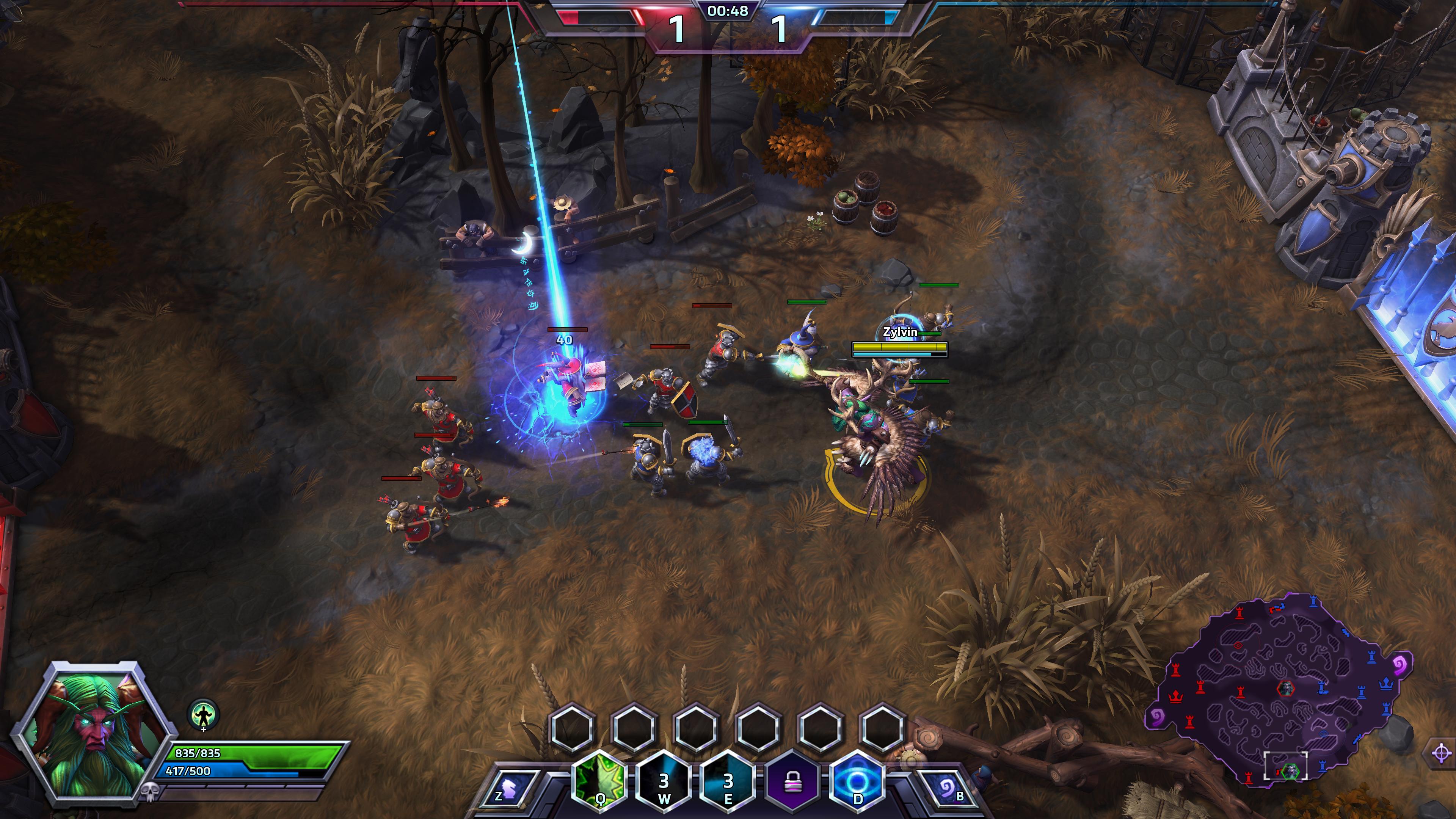
No last hitting, denying, or gold
Heroes of the Storm deviates from the standard MOBA formula pretty quickly by entirely removing last hitting, the mechanic of getting gold by dealing the final blow to minions. League of Legends did away with DOTA’s denial mechanic (killing your own minions so your opponents can’t) but HotS takes it a step further by making last hits only relevant to certain Heroes and only if they’ve taken certain Talents—another new feature that I’ll get into on the next slide—that offer increased stats for each kill. You can still last hit and attack minions to clear waves quicker, but that’s usually all it will do.
Without last hits, how do you get gold? Well, HotS doesn’t have any sort of gold or currency either. No gold also means no items, but it doesn’t mean Blizzard has removed builds and customizability altogether. Items have been replaced by Talents, which we’ll talk about next. The removal of gold means there is no reason to farm minions in a lane. You’ll still be in lane to gain experience, push down towers, or hold off an opponent’s push, but you won’t have to carefully watch each minion’s health bar unless you want to and generally the “laning phase,” if you can even call it that, is significantly shorter.
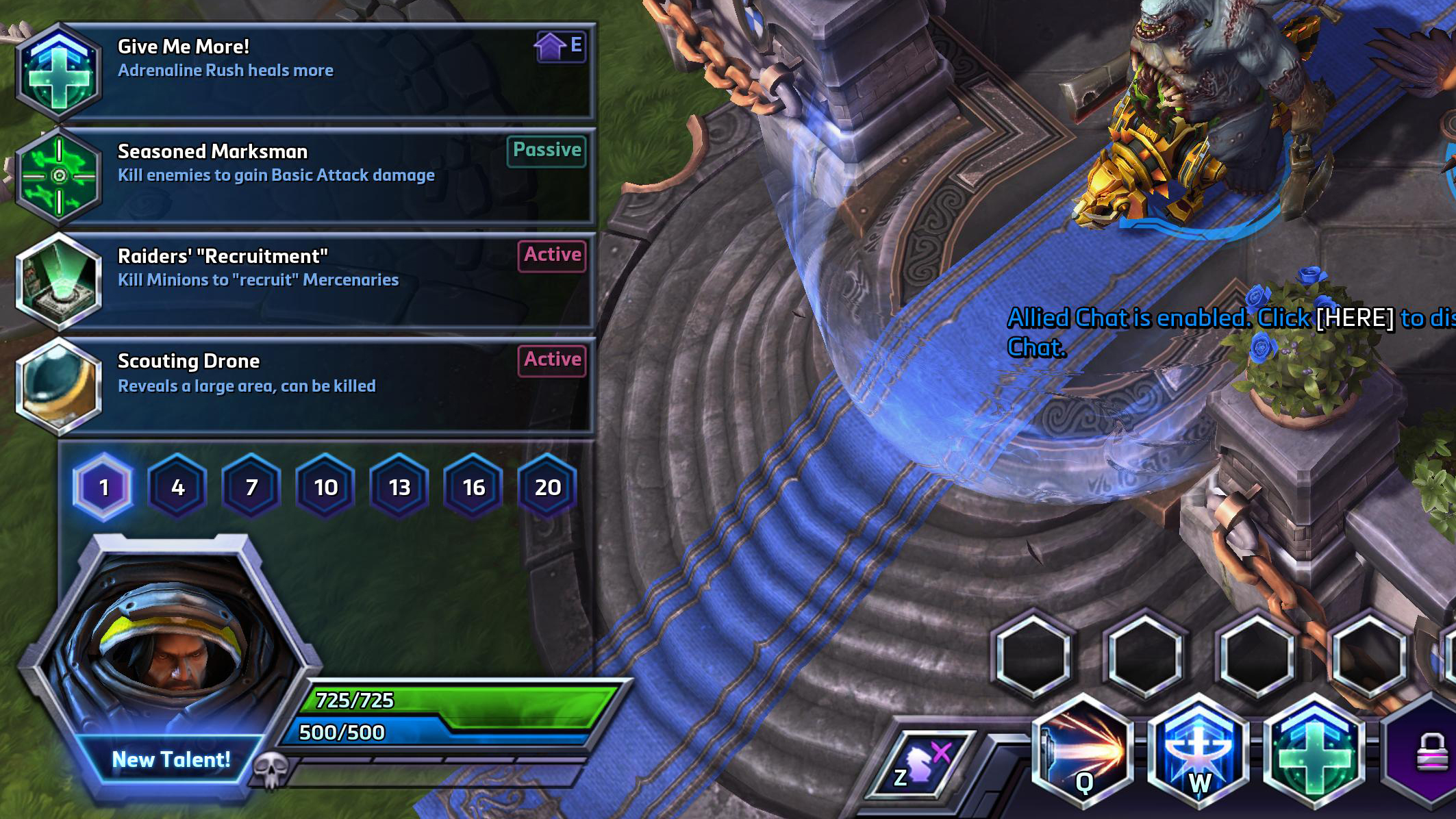
Items and ability points have been replaced by talents
As I mentioned in the last slide, the lack of a currency means items are no longer in the game. Instead you have a Talent system. At certain levels, usually every three or four level-ups, you are able to choose a Talent for your hero that modifies your abilities or sometimes gives you brand new ones. You have a choice between four or five Talents each time, and can choose from a set list determined by your level.
It definitely doesn’t share the depth of an item build system, but it is significantly easier to understand when playing a hero for the first time. You are more restricted by the limited options in each talent choice, but there’s also no risk of veering terribly off course and wasting gold on an item that won’t help you at all. Certain talents are better than others, but any choice will make you stronger because the improvements you are getting have been designed specifically for that hero.
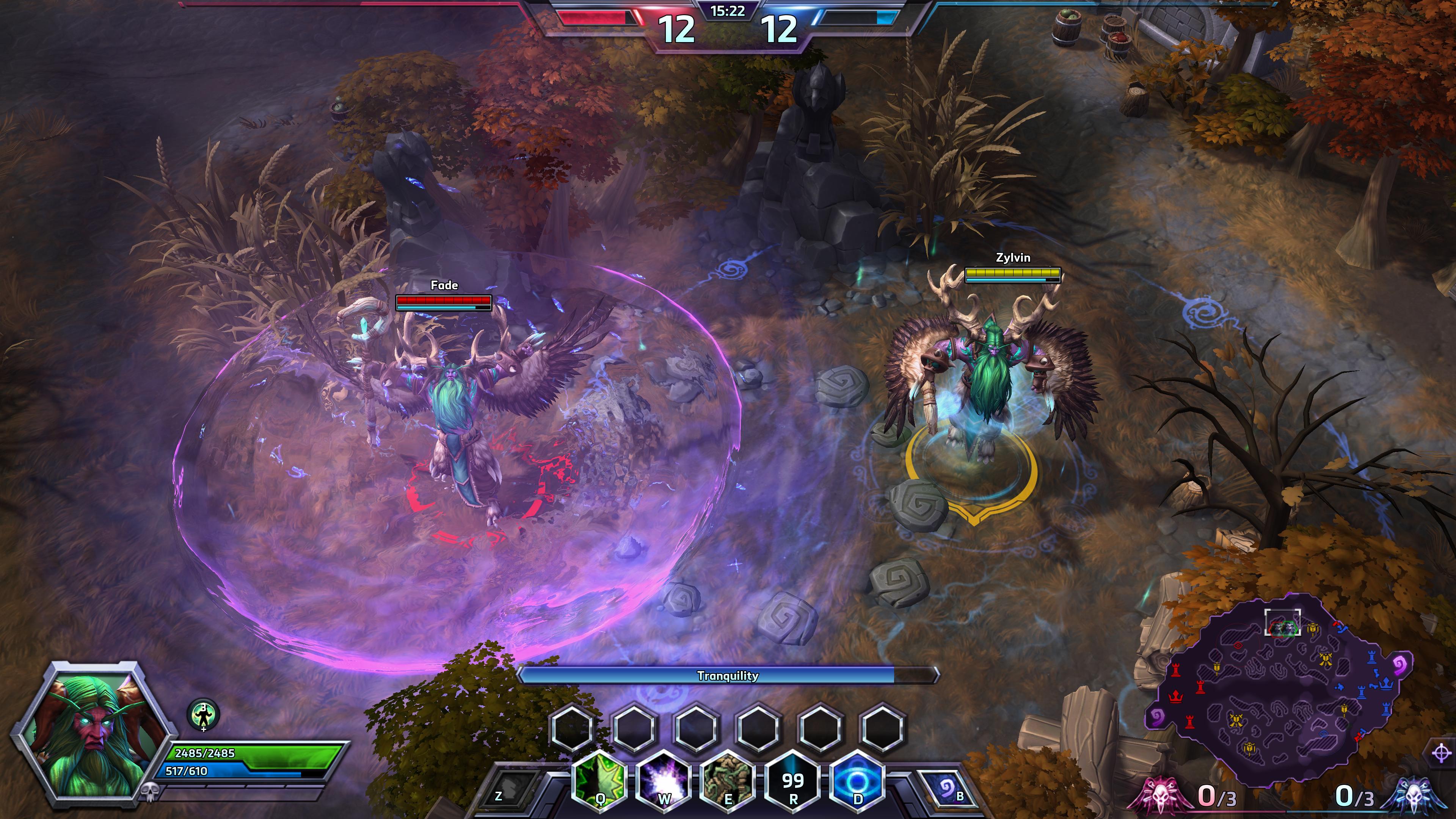
You start with all your abilities and can choose between two different Heroics
Each hero has three standard abilities, a trait—which can be a passive or active ability—and a choice between two different Heroic abilities,the equivalent of an Ultimate—an extremely powerful ability usually with a long cooldown. You unlock your Heroic ability at level 10, but all the others are usable from the start of a game. This means level one can see large team fights just as much as any other point in the game, especially when contesting the watchtower spots available on some maps that grant vision.
However, level 10 is when team fights start getting serious. If your team can get your Heroic abilities and start a fight before the other team gets theirs, it almost always goes in your favor. You only get to choose one of your two Heroic abilities per game, and each hero’s options are usually very different; Supports can have an offense and a defense Heroic, Assassins can have a choice between bursty or sustained damage heroic, etc. Of course, it isn’t always so black and white, and which Heroic you’ll want to choose is reliant on what Heroes you’re playing with and against.
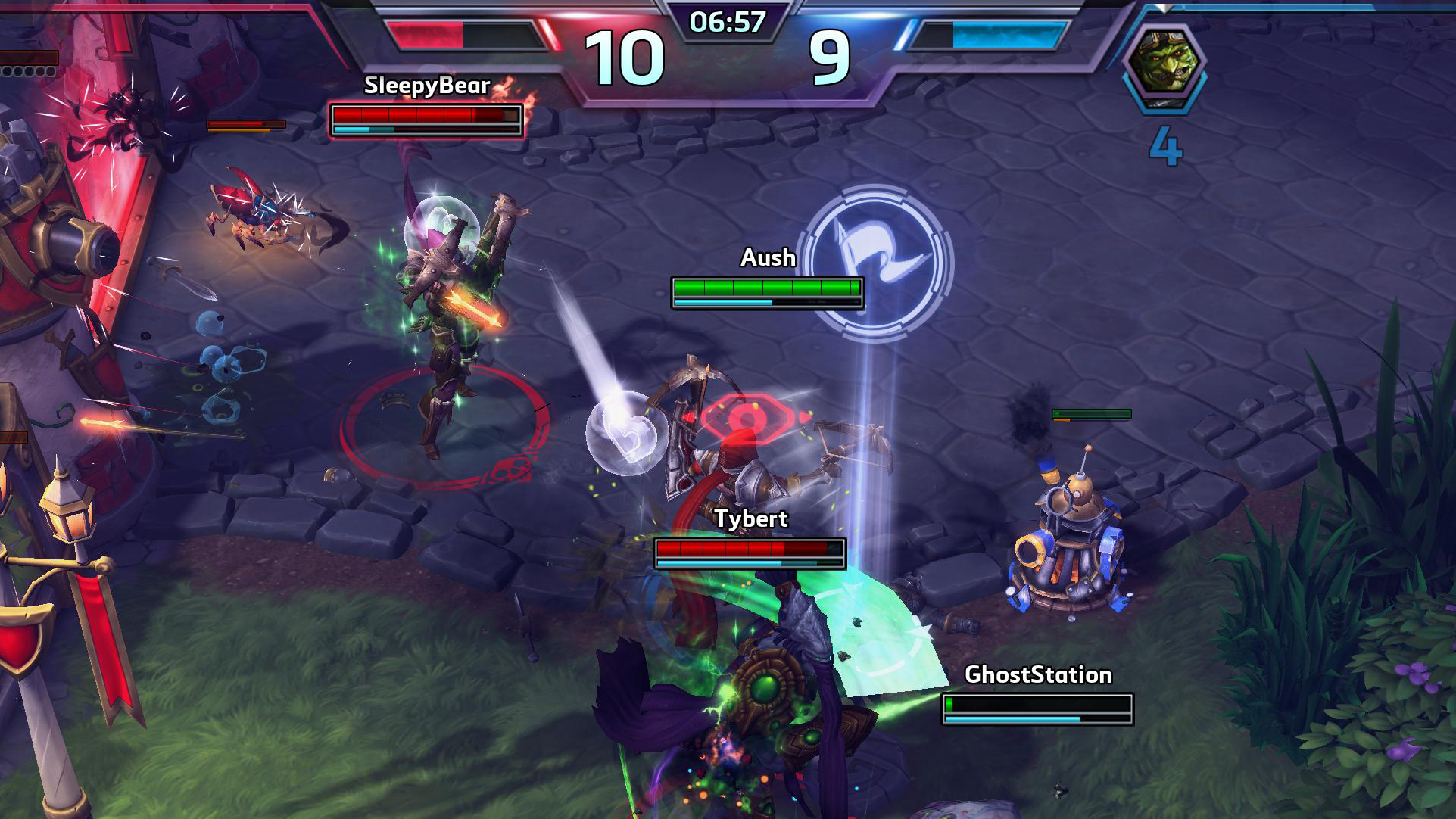
Your team shares experience and you are all the same level
Another reason level 10 is such an important moment is because your entire team shares its level. When one of you gets a level up, you all do. That means, at level 10, your team instantly gets five new and very strong abilities. Power jumps occur together and capitalizing on team fights while ahead will compound your advantage. It’s also important to note that you reach level 10 in Heroes of the Storm much quicker than other MOBAs, as games will only last a total of 15-25 minutes.
Experience is gained when someone on your team is near enemy minions or structures that are destroyed. Since there’s no need to last hit, you need to make sure you send at least one person to each lane at the beginning of a game to soak experience, but the other two players can be more flexible based on the battleground you are playing on and what the enemy team is doing. After a certain point, working as a team becomes more important than having people sit in a lane. In general, there isn’t much dead time during a game.
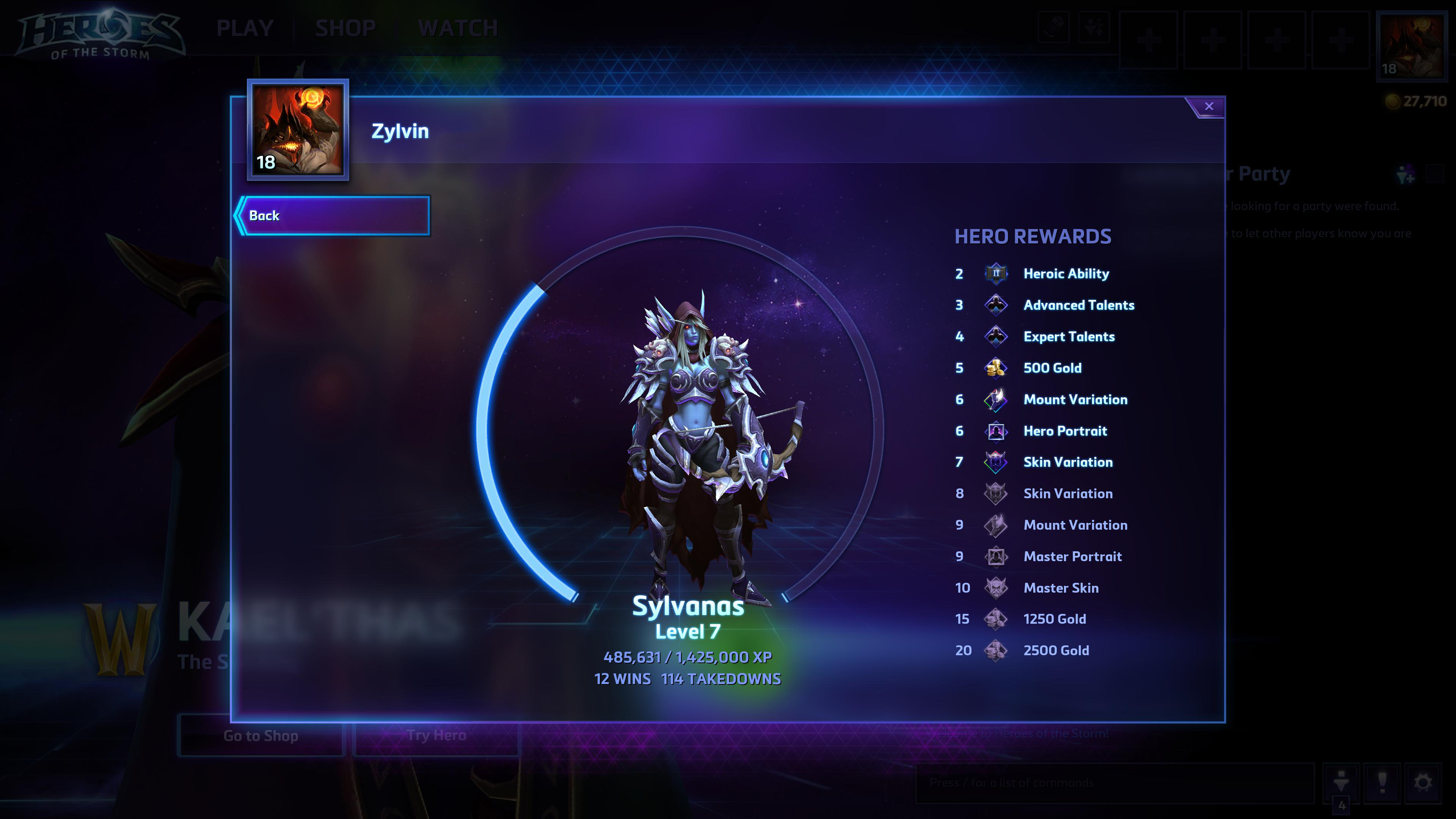
Hero and account levels
Stepping out of an actual game for a second, Heroes of the Storm handles account levels slightly differently. You have an overall account level that unlocks bonuses as you progress, but you also have an individual level for each hero which levels up as you play them. Getting a hero to level four only takes a handful of games, but certain talent choices and even one of the hero’s heroic abilities are locked until you do.
The reasoning behind this is so you won’t be overwhelmed by choice the first few times you play a hero, with more talents becoming available as you play them. Reaching level 25 on your account will unlock all the talents for every hero, so once you are comfortable with the game the restrictions go away. Leveling up a hero past level four gives you extra gold for your account, unlocks color variations for your mounts—another new feature I’ll mention later—and even unlocks a “Master Skin” for that hero at level 10.
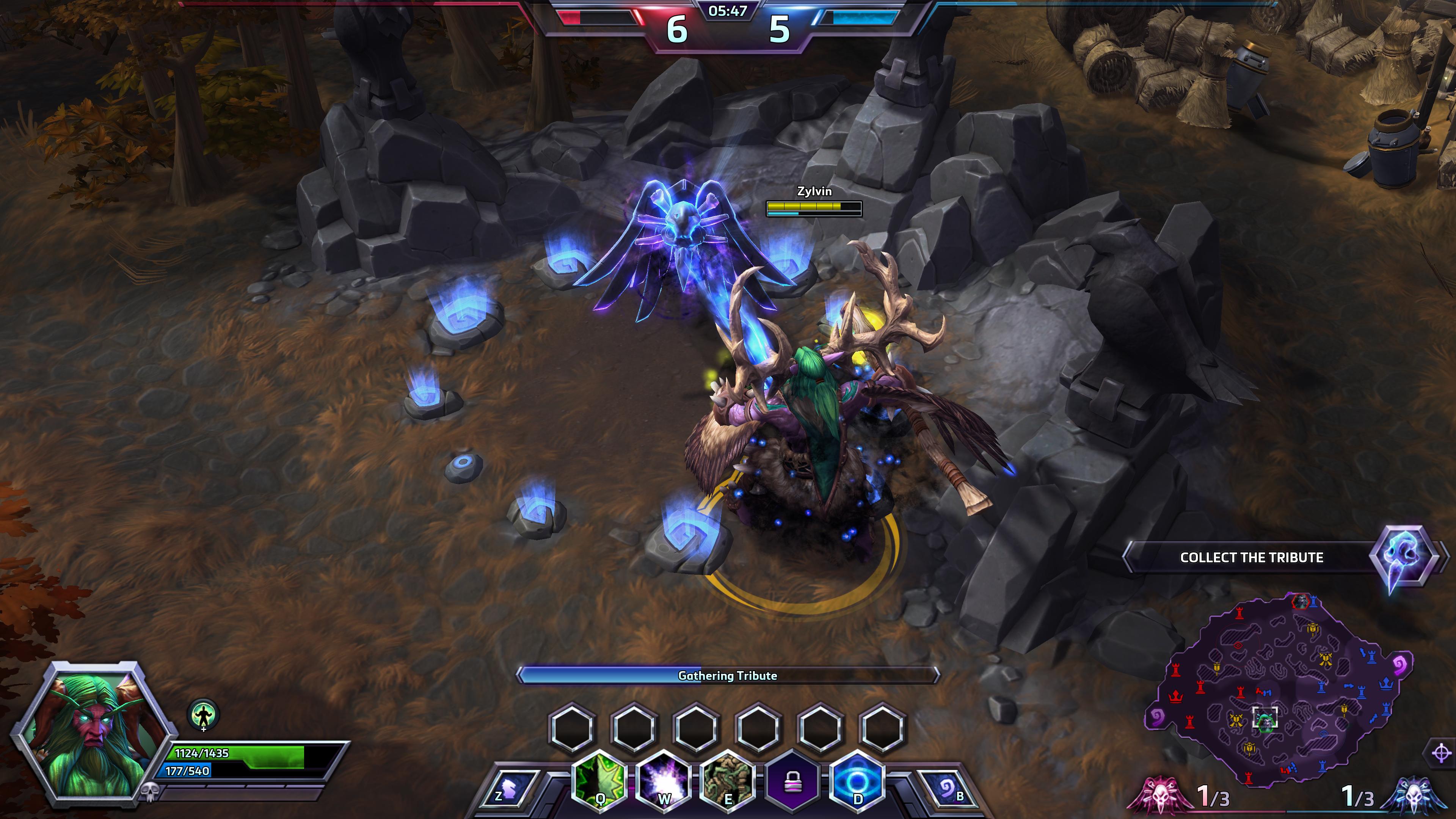
Multiple battlegrounds with different map objectives
Probably the largest difference between Heroes of the Storm and the likes of Dota 2 and League of Legends is that HotS has many different maps, called battlegrounds, randomly chosen each time you play. These aren’t simply cosmetic differences, each battleground has a different theme, size, map objectives, and strategy—though they all share the same win condition, killing your opponent’s Core.
Dragonshire tasks you with controlling two shrines on the top and bottom of the map in order to control a Dragon Knight that can push down lanes very hard. The Haunted Mines only has two lanes and an underground area filled with skeletons; killing skeletons drops skulls, which in turn powers up a large golem that will push for your team. Blackheart’s Bay has treasure chests and pirates scattered around the map that drop coins; turning coins into a ghostly pirate in the center of the map will make him bombard your enemies structures for a short time.
The different objectives on each battleground are the bread and butter of Heroes of the Storm. A lot of people have called HotS MOBA-lite, and while the game is undeniably simplified and easier to play than other MOBAs, the map variation helps make up for lost depth elsewhere. There are already seven different battlegrounds and Blizzard has told us they aren’t going to stop adding more any time soon. Learning the strategies, objective timings, layouts, and team compositions for all those maps is what keeps the game interesting and challenging after you’ve already mastered a hero.
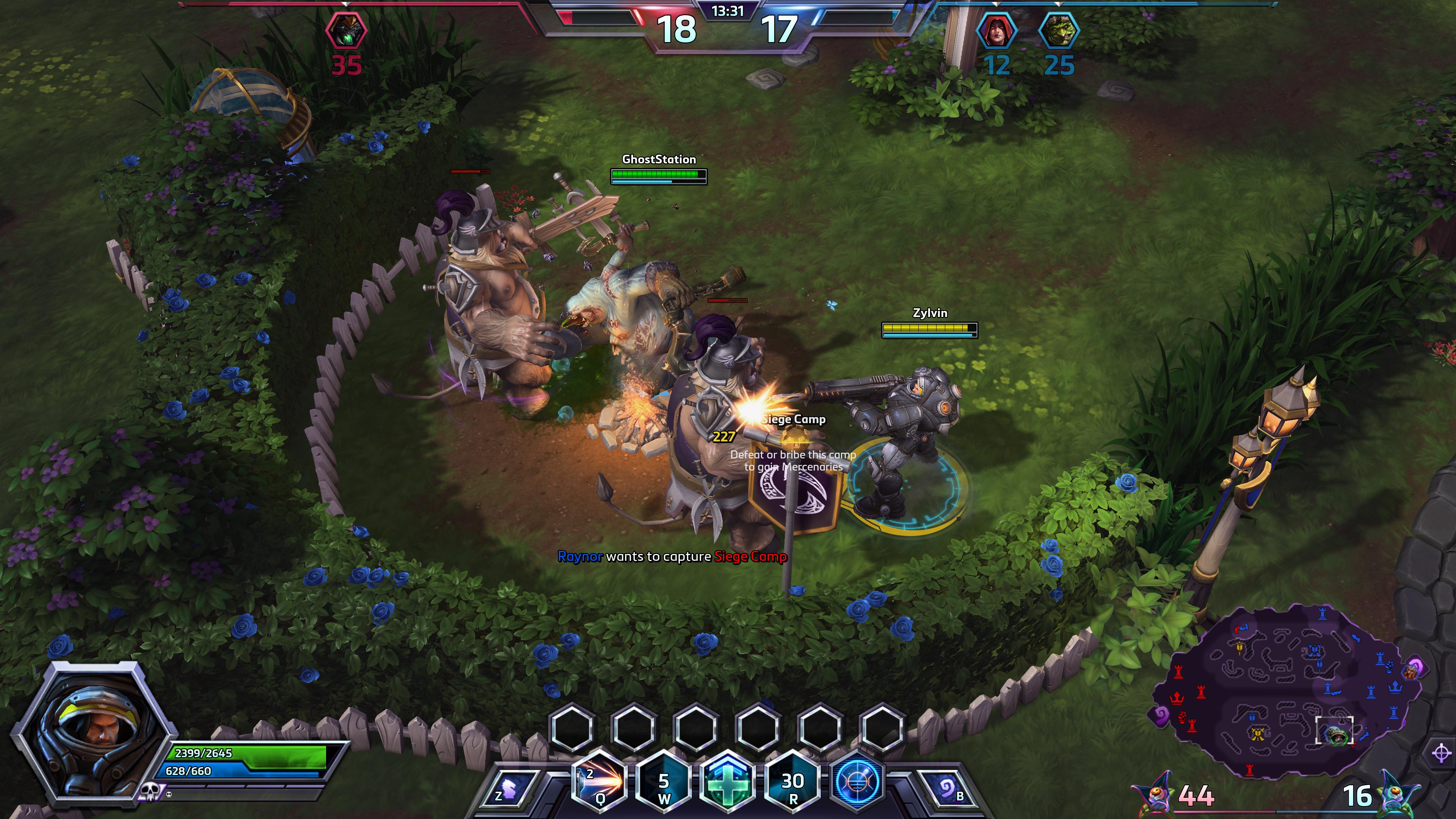
Mercenary camps
Another major objective during a game is taking mercenary camps. There isn’t a jungle in the way you think about it in LoL or Dota. There is space between the lanes—though even that varies based on the map—that is home to neutral monsters called mercenaries, but these guys are usually too tough to take down on your own. Once you clear a mercenary camp, a circle appears; stand in the circle for a short time and the mercenaries you just defeated will join your team and begin pushing the nearest lane. Additionally, when a mercenary camp is taken, it marks it on the map and shows where those mercenaries are headed, regardless of if you have vision on it or not. It will also display a timer on that camp letting everyone know exactly when it will respawn.
There are only three kinds of mercenary camps; Knights, which consist of four larger than average minions. Siege Giants, which are two large minions that can throw rocks at towers from a safe distance. And the Boss, which is very large and tough to take down, and has special abilities depending on the battleground. Not every type of Mercenary is on each Battleground, but they are all unique looking depending on the theme of the map.
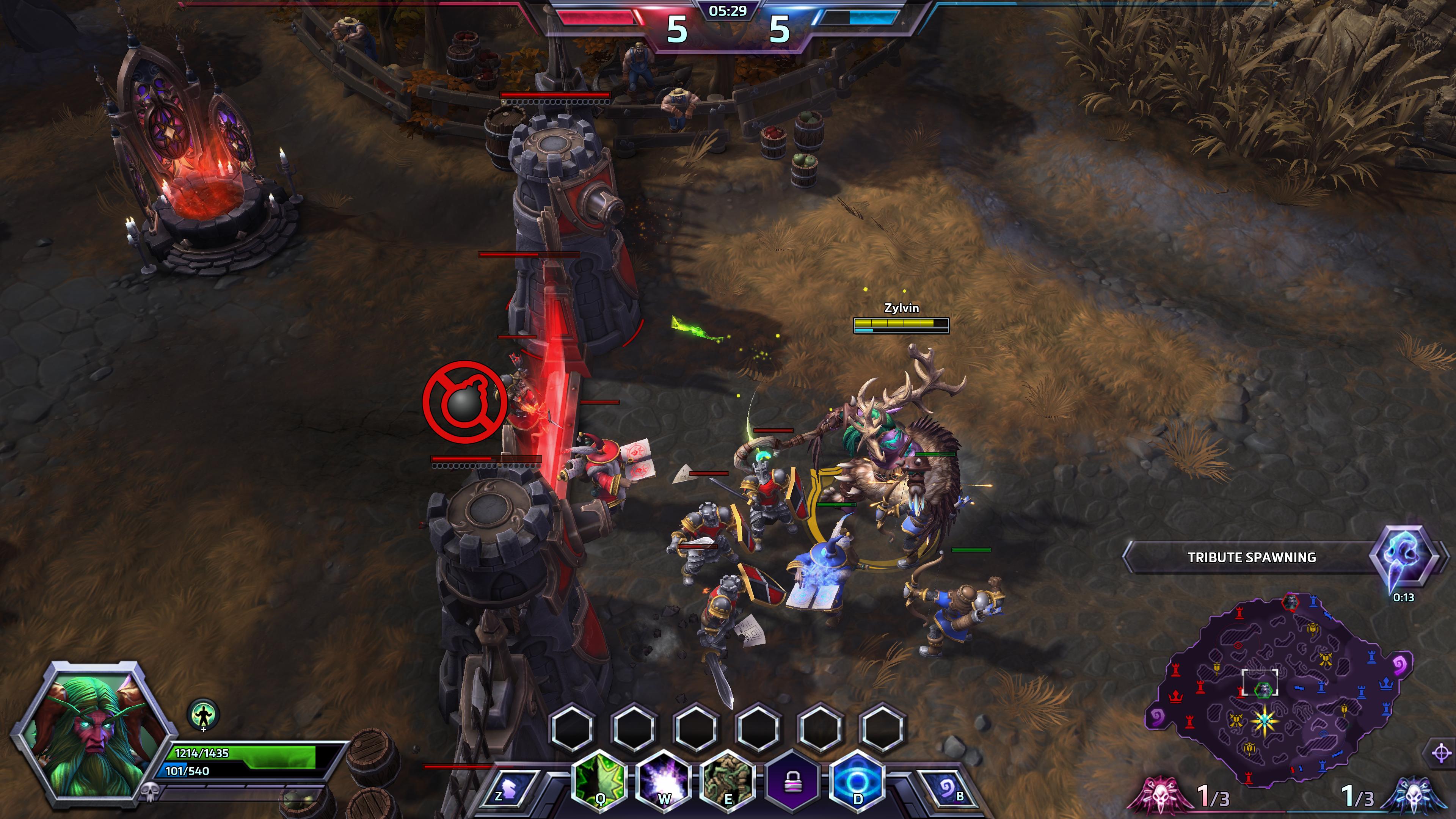
Towers, walls, and sieging
Towers behave a little differently than they do in other MOBAs, but the largest difference is the addition of walls. Each lane has two forts per team, each of which is behind a wall blocking the entire lane with a gate that only allows friendly units to pass through. There are two towers on the wall that will prioritize firing at minions before heroes. Each tower and fort, which will also fire to defend themselves, has ammo that will regenerate very slowly over time, meaning if you keep the pressure on a tower for long enough it will become easier to take.
The walls make tower diving pretty much impossible, or at least suicidal, but it also makes sieging a much more specialized role on the team. I’ll talk about hero roles in more depth on the next slide, but because abilities can deal damage to structures, certain heroes have abilities specifically designed to effectively siege. In addition to the forts, walls, and towers, each fort is accompanied by a healing fountain which can be right clicked for a temporary boost in health and mana regeneration, but can only be used once every 90 seconds.
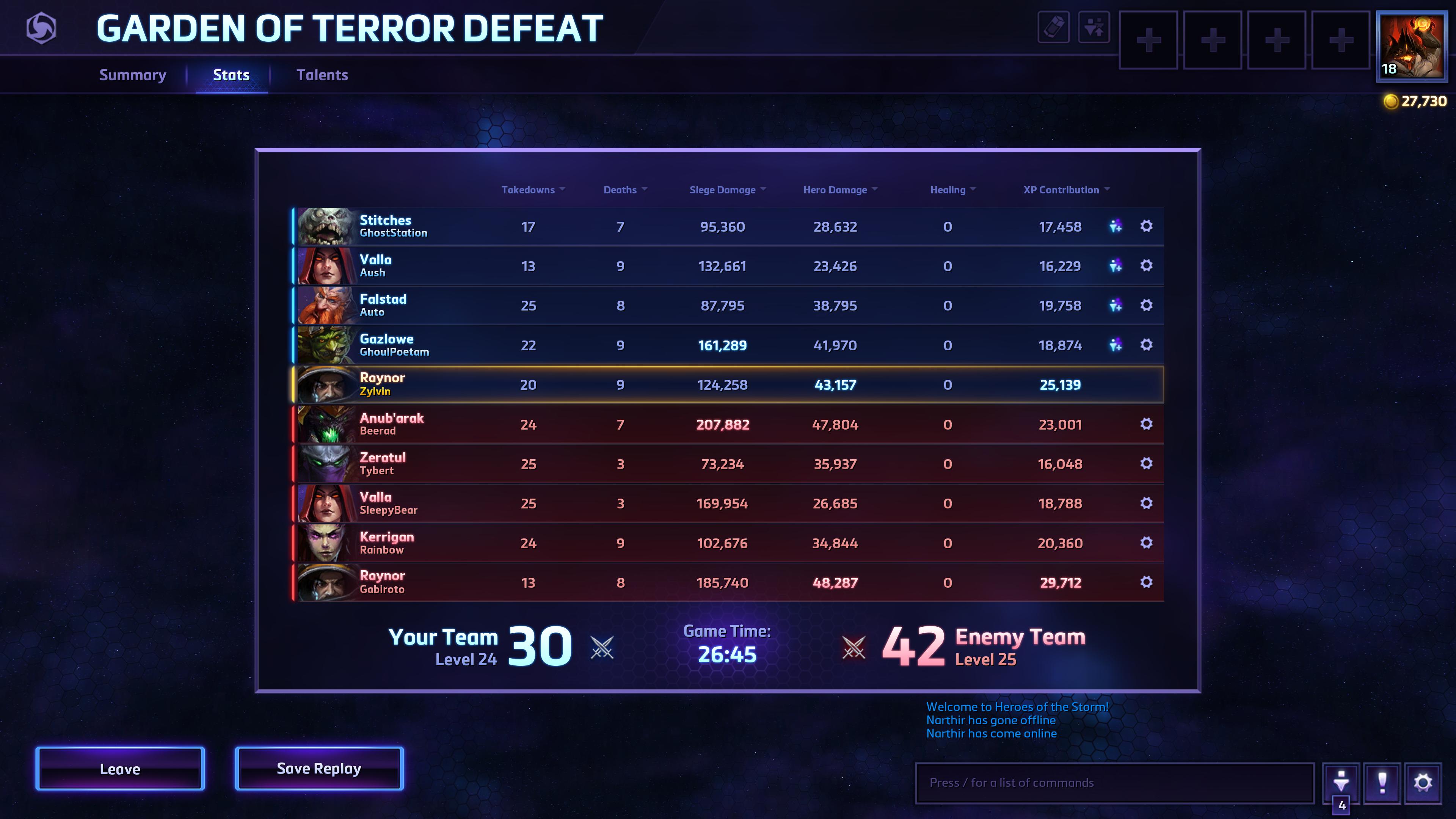
Hero roles and categorization
Because there are no items, hero roles are more clearly defined. You can’t try and make a healer hero into a damage dealer because there are no damage items to build. This is limiting, but it also helps prevent trolling and makes each hero’s job more obvious. The four archetypes in Heroes of the Storm are Support, Assassin, Warrior, and Specialist—a term used to describe heroes that have specialized roles or aren’t so straightforward to play.
Now, there are supports who can deal damage and Warriors who can heal, but generally it’s broken down into healer, damage dealer, tank, and other. This is also somewhat reflected in the score screen, which lists the expected kill/death numbers, but then highlights hero damage, siege damage, healing done, and experience contribution. How you choose to contribute to the team is highlighted just as much, if not more, than how many kills you get. This also let’s Blizzard flex their design muscles when it comes to weird heroes.
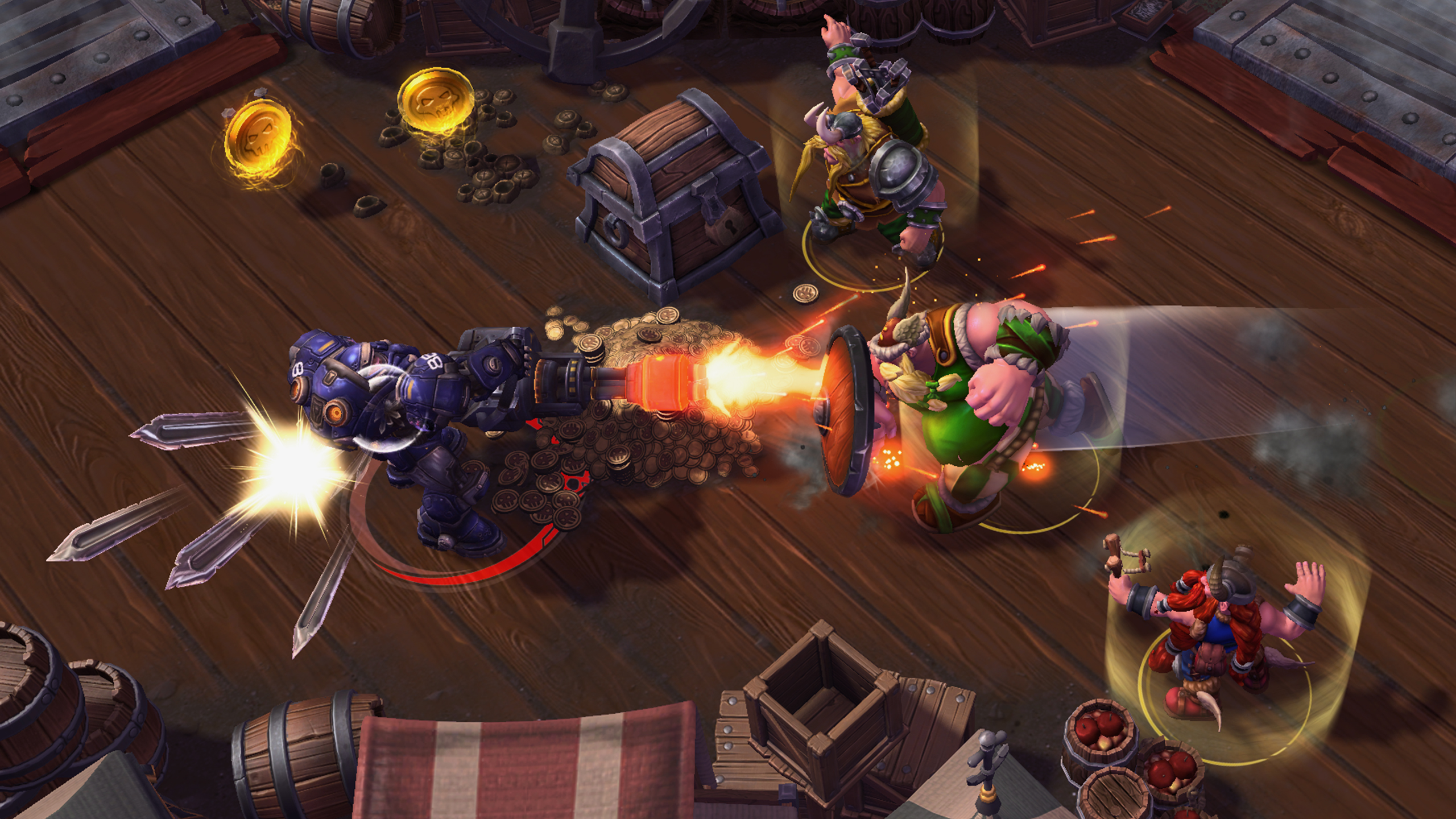
Weird heroes
One of the more unique aspects of Heroes of the Storm is Blizzard’s willingness to make heroes with weird and interesting abilities. You might come across a team that only ever has four people in their team fights and think “Why are Abathur players always AFK?” Abathur is a character that stays hidden in the base and plays entirely by proxy, buffing other minions and heroes while casting spells from whatever friendly character they choose.
The Lost Vikings are another great example, as they are actually three independent characters controlled by the same player. They may be individually weak, but it allows one player to soak experience from three lanes at once which can be useful in the right team composition and strategy. Murky is a weak hero who is easily killed, but each death is only worth a quarter of the usual experience and he’ll respawn in seconds from an egg the player hides somewhere on the map.
These weird and interesting concepts, frankly, will simply never be introduced into a game like League of Legends. Heroes of the Storm’s simplified mechanics make complex characters like this easier to play both as and against, allowing them to be fun instead of frustrating. And they are a lot of fun.
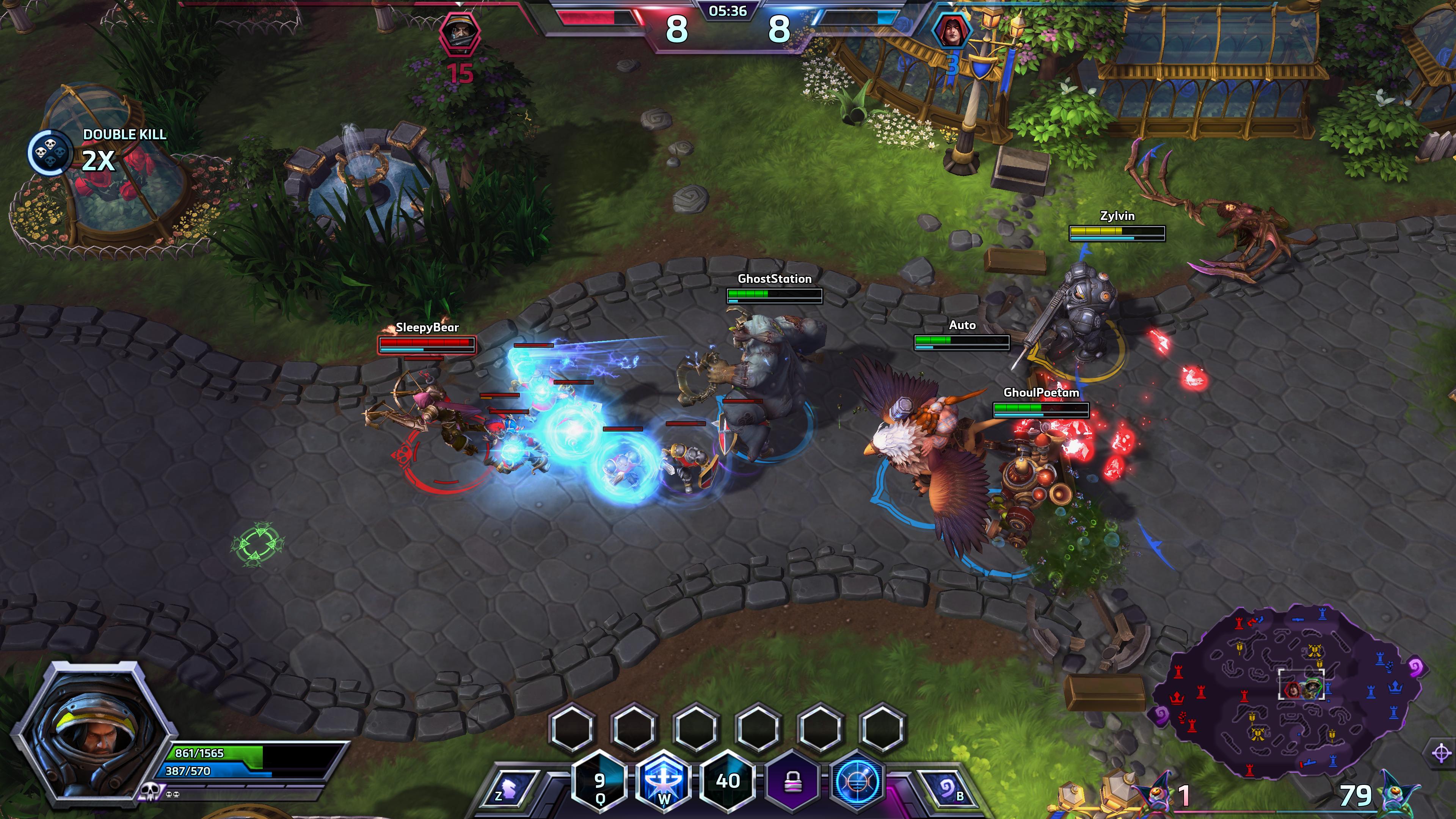
Playing as a team
We’ve covered most of the clear cut differences between Heroes of the Storm and the other top MOBAs, but now it’s time to talk strategy differences. I am in no way saying that League of Legends and Dota 2 have the same strategy, but they do have a similar pace; early-game laning leads into mid-game skirmishes to try and pull ahead, followed by late-game pushing. Heroes of the storm plays differently.
As I said before, there isn’t any farming and basically no laning phase as it’s usually known. Blizzard can use a map’s objectives to time exactly when and where they want a fight to take place, meaning the pace of the game is much faster and more calculated, and playing as a team is much more important than trying to carry alone. No one player can run away with a gold or level advantage, so you are always strongest as a team, and the strongest team plays you can make are taking objectives.There are moments you’ll want to split up to cover more ground, but for the most part you’ll find yourself working as a five-player unit. Objectives are, for the most part, more important than kills and dying to secure them can sometimes be worth it.
For example, the battleground Raven Court periodically spawns “tributes” around the map. Collect three and your opponent's towers temporarily stop working, their minions all have one health, and you can basically plow through their defenses. There is nothing even close to as powerful as this effect in LoL, so it’s easy to underestimate just how important taking these objectives can be. Simply put, they are the game. If you try to stay in lane all game when playing Heroes of the Storm, you aren’t playing it right. Unless you are playing a sieger like Azmodan or Sylvanas, then that might be your team’s strategy. (Full disclosure: I really like sieging.)

Other differences
Here is a last list of things that didn’t really fit into anything I mentioned before, but are still important distinctions from the usual formula:
Mounts: Every hero can ride a mount by pressing Z and channeling for a few seconds. The mount will give you increased movement speed until you attack or take damage, and cosmetically different mounts can be purchased or earned.
Stealth: Certain heroes can go invisible, but there will be a telltale shimmer visible to the enemy wherever they walk. There are a few heroes who can also detect stealthed enemies, but mainly you can outplay or be outplayed by a stealthed hero based solely on how close you are paying attention.
Vision and wards: Some heroes have access to talent that gives you a ward-like item, letting you place a totem down that provides vision of the area for one minute, but otherwise the only extra map vision you can get is by controlling watchtowers or certain hero abilities. Vision is, in general, slightly less important than in LoL or Dota, as you will usually be heading towards the same objectives as your opponents and because, as mentioned, you can see when a merc camp is taken. Shorter matches, grouped teams, and the lack of a jungler all tend to make your own team’s positioning more important than knowing exactly where the enemy team is.
Healing Orbs: There are seven minions in each wave; three melee, three archers, and a mage. When you kill the mage, it drops a healing orb for your team that will give nearby friendly heroes a small boost of health and mana.There is also a level one talent for some support heroes that will permanently increase your mana regeneration for every three healing orbs you collect.
Playing Heroes: Like League of Legends, there is a weekly free hero rotation and to play a hero permanently you have to buy it with in-game gold or real money. However, you can test out any Hero you’d like against AI in a special, one-lane map that lets you level up on command and reset your cooldowns.
There are, of course, more small differences. Heroes of the Storm is a different game, after all. It's free-to-play and going into full release on June 2nd.
